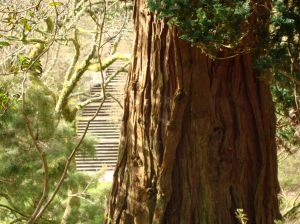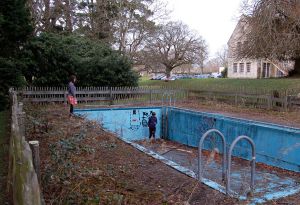Below is a bit of the story about Simonides and his memory palace ideas.
Here is a link to a current story about memory which also includes a description of the memory palace concept and how it has been used thorough the ages.
Story of Simonides:
The Memory Palace
Simonides of Ceos was an ancient Greek poet who wrote many elegies and epitaphs. He was the first poet to accept payment for his poetry. He lived from 556 to 486 BCE (before the common era). During a banquet with a number of notable Greeks, Simonides stepped outside to discuss a payment dispute. While he was outside the building, its roof collapsed killing everyone inside. As the rubble was being cleared he was called upon to identify the bodies of the dead so that their families could give them proper burial. He was able to do this by remembering the locations where they had been sitting around the banquet table.
This experience gave rise to his ideas connecting memory triggers with physical location which became the foundation for the art of memory. The exercise and strengthening of one’s memory was essential training for any scholar or orator in ancient times. It was as much a part of life as exercising one’s body or bathing.
By the middle ages, memory arts were studied through the writings of Cicero, the Roman orator whose De Oratore in 55 BCE includes, as part of the section on Rhetoric, the story of Simonides at the banquet as a way of documenting the origin of the art of memory. Scholars in the middle ages used Cicero’s texts to recreate the practice of the Art of Memory and the use of loci as triggers for stored memories. There is however no complete set of instructions for the art of memory as it was practiced in ancient Greece since every document that exists assumes general knowledge of this practice is commonplace.
The Art of Memory employs loci or physical locations—spots in a house or market or temple or other structure—to hold a series of thoughts for later retrieval. The idea is that one strolls through a building, one’s own home for example, and locates spots of significance (instructions are that this spot must be well lit and striking in color, shape, or emotional impact) and in these spots, points along a trajectory of thought or even exact words in a pre-composed speech are stored. First the building must be well known to the person storing the ideas, then the ideas must be firmly planted there in the mind—the mind associates the ideas with the loci. The loci are thought of as the wax tablets or pages on which the ideas are written—then retrieval is achieved later by taking a mental walk though this memory palace when the speaker needs the information in the course of speaking in public.
As taught in the middle ages, vivid images are used to symbolize ideas. In the mind’s eye, one then places each of these images into different loci. They can then be recalled in order by imagining that one is walking through the building again, visiting each of the loci in order, and mentally viewing each of the images that were placed in the loci, thereby recalling each piece of memory or speech in order. One might imagine that this practice took time to learn and to use well. The practice of using the method would strengthen with time and the facility for memorization would improve with repetition. This method was used not only for rote memorization but for composition as well. Taking a stroll through the structure—past corners and pieces of favorite furniture or windows or doorways—can also suggest ordering principles for ideas one intends to express. Senators and other orators in ancient Rome could speak for two hours and longer without recourse to notes and it is understood that though in some way they were speaking extemporaneously, their ideas had been pre-composed and ordered via memory palaces constructed as part of a discipline that was an ordinary part of education. A method that focused not just on facts but on mechanics of thought itself. For monks in the middle ages it was also a method for memorizing and recalling sacred texts and prayers. Illuminated manuscripts with their bright colors and vivid images aided in the memorization of the texts they contained.
In our time the aspect of the mind’s capacity that is most attended to and admired is the imagination—great powers in any field are attributed to a great imagination. In the middle ages the aspect most admired was memory. Not just because people were thought of as repositories of great works but also because this extended and developed memory gave them great discipline and capacity of mind. Thomas Aquinas was said to be able to dictate to four secretaries or scribes at once keeping each train of thought separately developing—and this is the dictation of four different texts fully composed in his mind
and waiting there available for recall.




